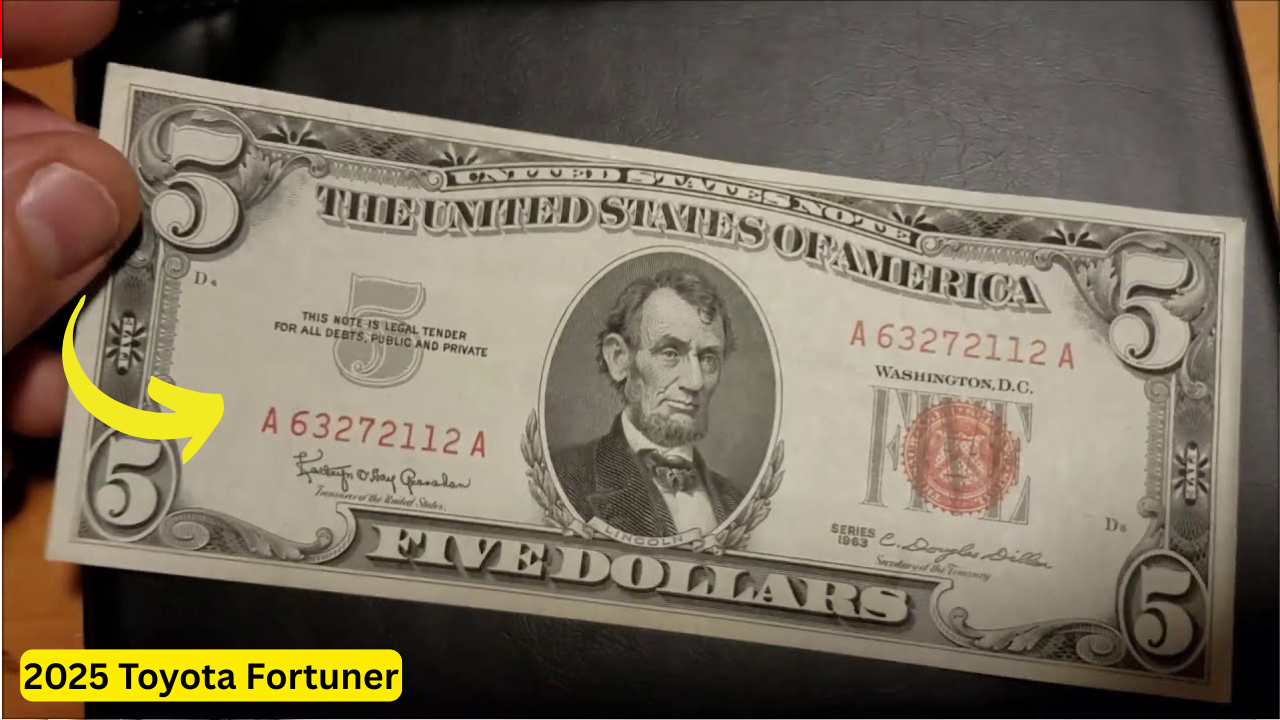1953 Red Seal $5 Note: While many people glance at old notes without giving it a second thought, collectors and numismatists are buzzing over the quiet surge in value of some 1953 $5 Red Seal notes. In particular, low-serial number notes from this series are selling for more than $100,000 at private auctions and in numismatic circles.
If you’re wondering if you too have a hidden treasure tucked away in a drawer or an old wallet, here’s everything you need to know — and what to look for.
$1,702 stimulus Payments for Everyone – July 2025 full Payment Schedule
What is a 1953 Red Seal $5 bill?
The 1953 $5 Red Seal Note is a United States Note, a type of currency that differs from the more common Federal Reserve Notes in circulation today. Its distinctive red Treasury seal and serial numbers make it easily recognizable.
These bills were printed during a transitional period in U.S. currency history and are now discontinued. Although many were produced, only a small number of those with rare characteristics, particularly low serial numbers, continue to garner eye-watering prices among collectors.
What Makes Them So Valuable?
The most distinctive feature that increases the value of a note is the serial number – the string of numbers written in red ink on the front of the note. Here’s what dramatically increases the value of a note:
- Low serial numbers: Bills with numbers ranging from 00000001 to 00000100 are extremely rare. The lower the number, the greater the demand.
- Uncirculated condition: Notes that have never been folded, torn or marked command higher premiums.
- Matching pairs of serial numbers: Some collectors pay extra for notes with consecutive or matching numbers.
- Star note: If the serial number ends with a star (★), it’s a replacement note—often rarer and more desirable.
- Printing errors: Notes with misprints, ink blots or off-center designs can also add significant value.
Recent Auction Highlights
In early 2025, a 1953 Red Seal $5 note with serial number 00000009, in uncirculated condition, reportedly sold for $114,000 at a private auction. Another note with serial number 00000025, which was slightly worn, sold for more than $80,000.
Dealers said such sales are often secretive and conducted through specialized auction houses, private collectors or numismatic forums.
Where to Look and How to Check
You don’t have to be an experienced collector to start looking. Here’s how to get started:
- Check old wallets or drawers: Many people keep old notes as souvenirs – check carefully.
- Look for the red seal and the Series of 1953: It should clearly say “Series of 1953” on the front, with a red serial number and a red Treasury seal.
- Check the serial number: If it begins with several zeros (such as 00000028), you may have something valuable.
- Check the condition: The purer the note, the more valuable it will be.
- Consult an expert: Contact a currency dealer or auction house for authentication and appraisal.
Beware of Fake and Misleading Listings
With the increased interest, some unscrupulous sellers may try to sell common notes as rare. Make sure any high-value note is verified by the Professional Currency Grading Service (PCGS) or Numismatic Guaranty Corporation (NGC) before buying or selling it.
Final Thoughts
The world of currency collecting is full of hidden gems – and this 1953 $5 Red Seal note is proof that a simple piece of paper can be worth a small fortune. If you find a note with a low serial number, you might have a six-figure salary in your hands.
So the next time you’re sorting through old stuff, take a second look at that old $5 note. You might be richer than you think.
also read…

